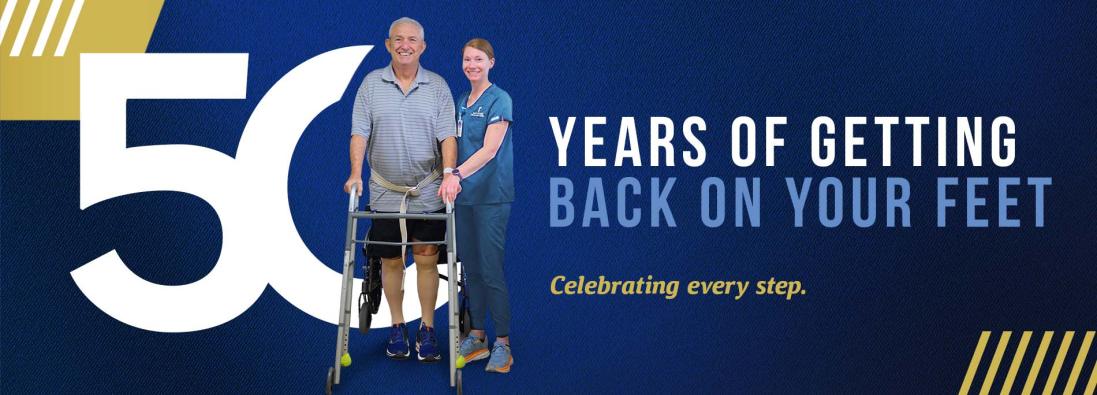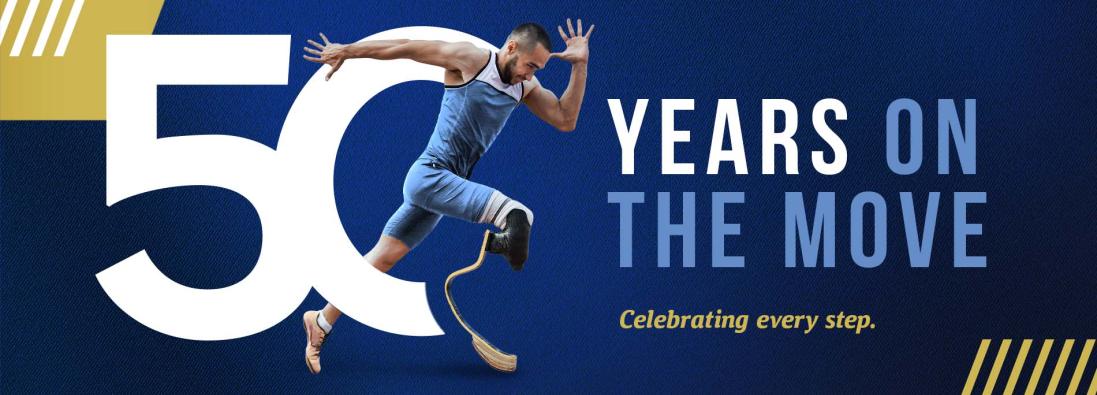
Two years after paralyzing school bus crash, Winona teen still pushing hard to walk again
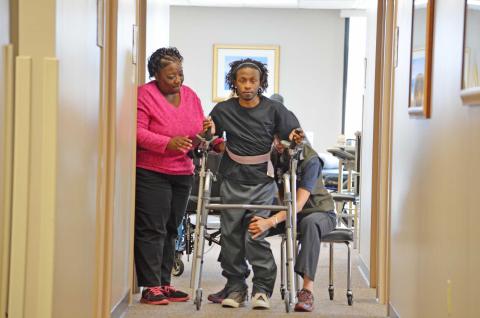
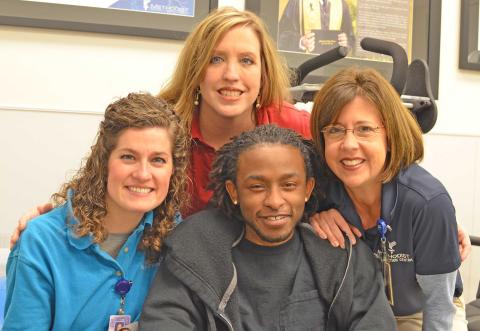

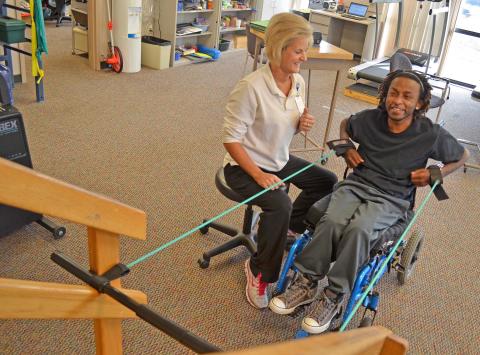
When he ran hurdles for Montgomery High School in Kilmichael, Stevelyn Robinson never took practice jumps at a track meet.
He wanted to see the flabbergasted faces as his 5-foot frame flew over chest-high hurdles and past much taller opponents.
Today, the Winona teen still likes surprising people, but now it’s all about proving what’s possible after a paralyzing spinal cord injury.
Merry Claire Wardlaw of Flowood said she’ll never forget what happened the night she gave Stevelyn tickets to a Germantown High School football game.
“His sister came to get me and said: Steve has something to show you,” said Wardlaw, a physical therapist who spent a year treating Stevelyn at Methodist Rehabilitation Center’s Outpatient Services in Flowood.
“When I got to his seat, I watched him scoot to the end, grab a post and stand up.”
Ordinarily, such a feat would require leg braces. But there’s nothing ordinary about Stevelyn’s stubborn bid to get back on his feet. He attacks rehab with the intensity of someone who has spent a lifetime proving his worth.
“I was always the smallest and nobody thought I could do anything,” said the award-winning, three-sport athlete. “Even my mom was scared for me to play football.”
“But I watched him take down kids twice his size, and he proved he could hang with the big guys,” says Sheila Robinson. “He doesn’t give up on anything.”
That can-do spirit has served Stevelyn well in the wake of a 2011 school bus accident that put the then high school senior in a wheelchair.
After two years of hard work, the 19-year-old can now push a rolling walker down the hallways at Quest, a Methodist Rehab program that helps people with spinal cord injuries return to school, work or community life. “I think the furthest I’ve gone is over 100 feet,” he says.
Stevelyn plans to continue therapy as he works on a college degree in business, and now both goals may be more attainable. Stevelyn recently learned he will be the recipient of funds raised at the 2014 Sigma Nu Charity Bowl football game at the University of Mississippi in Oxford.
"Stevelyn's work ethic and perseverance are truly inspirational,” said Paul DeForest, philanthropy chairman for the Ole Miss fraternity. “We are excited to have him with us to celebrate Sigma Nu Charity Bowl's 25th anniversary, and we hope to be able to help him accomplish all of his goals."
Inspired by the late Chuckie Mullins, an Ole Miss defensive back who broke his neck during a football game, the event has raised more than 1.4 million for people with spinal cord injuries since its 1990 inception.
Stevelyn will be part of the March 21 festivities in Vaught-Hemingway Stadium, and he had a “big Kool-Aid grin” when he got the invitation, said his mom.
“I was excited,” he said. “I couldn’t do anything but grin and say thank you.”
The Robinsons live in a mobile home that is hardly wheelchair friendly, so Stevelyn hopes the funding will provide a better living situation for his family. And his mother is grateful he’ll have help with his education and lifelong medical costs.
Stevelyn says it means a lot that students his own age will be raising the funds and that the event has a sports connection. “I look at the awards I got in high school and it motivates me,” he says. “What keeps me going is I want to get back to competing.”
“He’s the kind of person who has had a goal all along, not just therapy goals, but lifelong goals,” Wardlaw says. “I don’t think he sees himself as limited.”
An honor roll student and natural leader, Stevelyn had only his little sister’s safety in mind when he spied a log truck bearing down on their school bus the morning of Dec 2, 2011. While trying to shield 12–year-old Jazalyn, he wound up at the bottom of a pile of kids and broke four vertebrae in his neck.
He underwent surgery the next day to repair the damage, but his surgeons weren’t optimistic. “They told me I was paralyzed from the neck down,” he said. “And it made me sad. But something told me not to give up.”
During a 29-day inpatient stay at Methodist Rehab’s hospital in Jackson, Stevelyn showed signs his paralysis might not be permanent. And MRC’s experienced spinal cord injury team began building on his returning abilities to help the teen regain as much independence as possible.
Stevelyn took his first step aided by the hospital’s body weight-supporting treadmill, a system that helps retrain a patient’s central nervous system and encourages the ability to walk. He was also introduced to electrical stimulation devices that help activate muscles in the legs. And through the hospital’s adaptive computing program, he sampled various devices and software to help him compensate for limited use of his hands.
The journey since has taken Stevelyn through about every outpatient program MRC offers. “It was definitely a collaborative effort,” Wardlaw said. “We used every tool we could think of.
“Whatever they want me to try, I’ll try it,” he says.
Stevelyn wants to walk completely unassisted, but in the meantime he’s exploring other forms of transportation. Through MRC’s Assistive Technology Clinic, he was custom-fitted with the best wheelchair for his needs. And the center’s Driving Rehabilitation Program has helped him obtain the right equipment and training to get back on the road.
Occupational therapist Ashlee Ricotta, who administers the driving program, said it was an important step toward independence for Stevelyn, and he was eager to learn. “He really excelled, and he smiled the whole time he was driving.” she said.
“I can finally tell my mom I’ll be back later,” he quips.
By necessity, mother and son have been almost inseparable since his accident. A former certified nursing assistant, Sheila quit her job to care for Stevelyn and to ferry him to his many therapy sessions. And their time together has made both appreciative of the other’s sacrifice.
“She’s my biggest supporter. She motivates me and inspires me and is another reason I work as hard as I do,” says Stevelyn.
“To see him strive and his determination, there’s no way I could give up,” Sheila said. “If he can do it, I know I can, too.”
Both are grateful for the help they’ve had along the way, and they say they couldn’t have done it without the aid of MRC staff. “They really took us in,” Sheila said. “They treat us like family.”
When they look up in the stands at the Charity Bowl, the Robinsons will likely see several members of their MRC “family” beaming back at them. Most are making plans to be there.
“I think all of us want them to know they have our support,” Wardlaw said. “They’re so humble and grateful, you feel like you can’t do enough for them.”
For information on contributing to the 2014 Sigma Nu Charity Bowl, go to www.sigmanucharitybowl.com. For information on Methodist Rehab’s spinal cord injury programs, go to www.methodistonline.org or call 601-364-3498.
